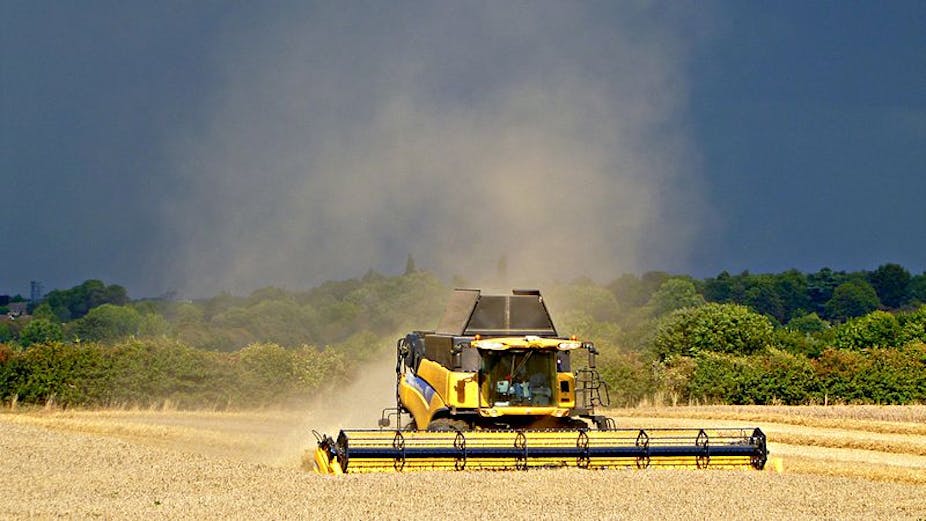FOOD SECURITY - Here’s how things stand.
More than 500 million farmers produce crops and livestock that can feed nearly 7 billion people, and yet 1 billion still go hungry.
It’s estimated that the world’s population will grow to at least 9 billion before the end of this century, and it’s likely the 8 billion who can afford food will be demanding more animal products, including meat.
These factors mean farmers will have to produce 70 to 100% more food than they do currently – a sobering thought.
But let’s look at the recent past for clues on whether this may be possible.
What’s happened so far?
Over the last 50 years the world’s population has more than doubled and world crop production has more than kept pace with that growth. In fact, crop production has almost tripled.
This amazing increase in yield was achieved by a combination of factors — better varieties, more pesticides, more fertiliser, more irrigation and more mechanisation, as well as a 27% increase in cultivated land area.
What happens next?
The area of irrigated land on earth is predicted to double by 2050, and there will be massive, three-fold increases in fertiliser use, particularly nitrogen and phosphorus, assuming these remain available and affordable.
To achieve the necessary yields of food, feed and fibre, huge increases of pesticide use are are also predicted (from 4 million tonnes currently to as much as 10 million tonnes).
What are the options?
There are many different approaches taken by farmers in their pursuit of food production depending upon their circumstances.
These are often divided into conventional, organic and GM (genetically-modified) farming.
But there is also overlap between the three types, the majority (about 90%) of farming practice is considered to be conventional while the other two are minor.
At present, only 10% of the world’s cropland is devoted to GM farming. Organic agriculture is also a minority farming practice.
Biotechnology in context
Humans have been genetically modifying animals and plants for millennia – domesticating and breeding cattle, for example.
We have selected animals that display specific genetic traits to breed together over generations to create the different breeds we see today.
This same technique is used to domesticate and breed specific pasture varieties or crops such as wheat.
With advances in technology and knowledge in the field of genetics we are now able to use something called “genetic markers” to speed this conventional breeding process up.
These are like bookmarks, highlighting specific genes that relate to specific traits expressed by a plant or animal (e.g. height). In plants, breeders can use the genetic markers to identify the desired traits and breed the best plants together.
There is another form of genetic modification that inserts the desired gene directly into a new plant. These plants (and animals) are generally called genetically modified organisms, or GMOs for short.
Isn’t GM bad?
The current (and often heated) discussion about GM and organic food is a red herring when one is thinking about the serious problem of producing enough food to feed a very crowded planet.
GM crops can help to minimise expansion of agriculture into natural areas (which can have dire consequences for the environment) by maintaining or even increasing yields on existing land.
It has also been shown that agricultural biotechnology has reduced pesticide spraying, greatly reducing greenhouse gas emissions and mitigating the environmental impacts of insecticides and herbicides.
One often-cited argument against GM involves gene flow from cultivated (including biotechnology-based) crops to and from wild plants. While known to occur, this does not, as a general rule, pose a significant threat to the ecosystem.
The gains
There have been many peer-reviewed studies of GM crops investigating yield and economic effects. (There are almost 170 reports on yield alone, from both developing and developed countries). A majority (more than 70%) reported that there were increases in yield when GM crops were grown.
The economic effects of these yield gains when combined with reduced costs of pesticide inputs can have a positive impact on poverty.
There are almost 100 peer-reviewed studies of the economic impact of GM crops, and again over 72% are positive.
The risks
Despite these benefits, there are risks associated with GM crops which could have negative effects.
Herbicide-tolerant crops risk assisting with the development of herbicide-tolerant weeds. Insect-resistant crops risk the emergence of resistant pests.
These risks are significant and echo similar risks in conventional agriculture. Management of these new crops requires sophisticated skills that are vital to the long-term usefulness of gene technology for ecosystems.
The future?
GM crops will be a part of the solution to the dilemma of increasing food, feed and fibre production while at the same time conserving biodiversity.
They are not going to solve all problems, and it’s worth remembering they are a relatively minor component (less than 10%) of the total system at present.
Solving the needs of the food ecosystem of the future will also require new regulatory regimes and political and social changes as well as the technical advances foreshadowed here.
Cooperation and community involvement will be essential in order to successfully address the issues inherent in feeding the world’s growing population.
Red herrings are in plentiful supply but they will not feed 9 or 10 billion people.
More from our series on food security
When the world starves, where will Australia get its food?
To feed the world, farming emissions must rise
Without biosecurity, higher crop yields mean better fed rodents
The unpalatable truth about biofuels, hunger and political unrest

